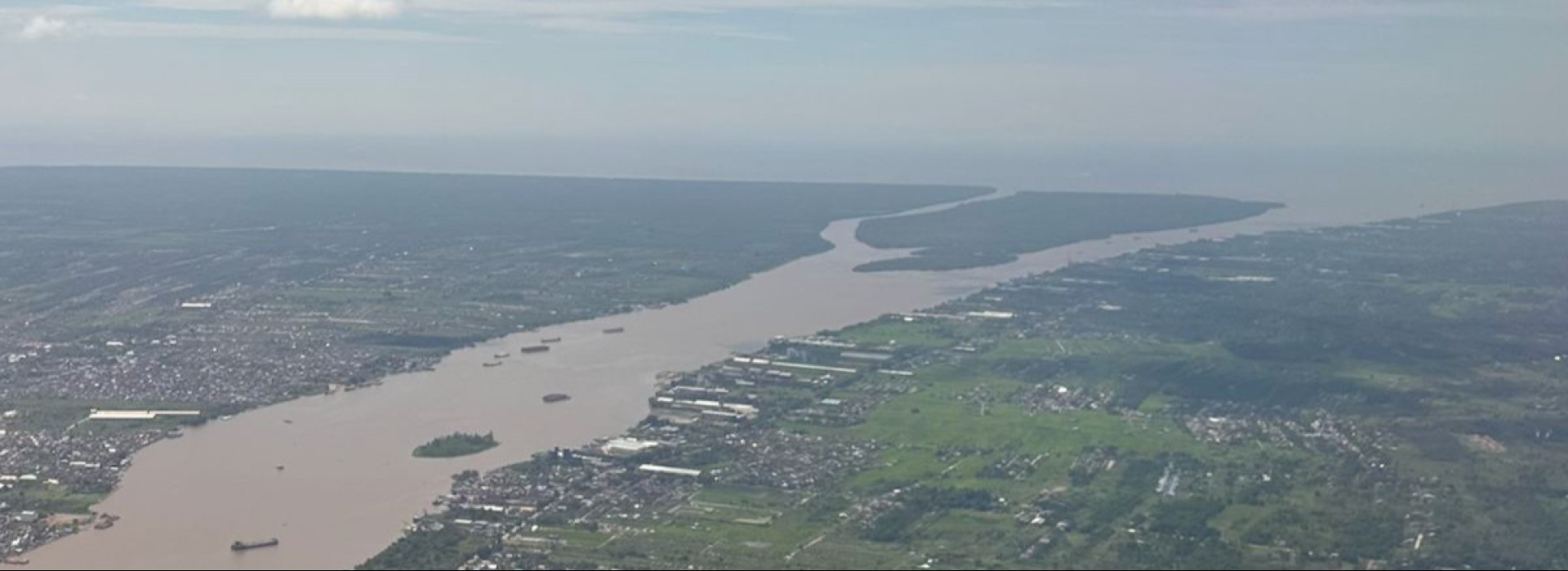Understanding Flood Risk Modeling: Key Insights from Dr. Stefan Steiner's Presentation
Flooding poses significant challenges globally, requiring innovative and evidence-based solutions to mitigate its impacts. Dr. Stefan Steiner, FINCAPES Project’s Principal Investigator, delivered a compelling presentation titled “From Risk to Resilience through Flood Risk Modelling for Pontianak City” during the FINCAPES workshop on November 13, 2024. His discussion emphasized the crucial role of integrating scientific data into policymaking, highlighting actionable strategies to mitigate flood risks and safeguard vulnerable communities.
Why Flood Risk Modelling Matters
Flood risk modelling integrates meteorological, hydrological, and topographical data to forecast potential flood impacts. According to Dr. Steiner, these models are critical tools for policymakers, providing the insights needed to reduce flood risks effectively. By pinpointing high-risk areas and predicting the scale of possible disasters, governments can allocate resources more efficiently and implement precise, targeted measures to mitigate impacts.
Global Case Studies: Lessons Learned
Prof. Steiner’s presentation included compelling examples from three regions, highlighting how flood risk modeling has been successfully applied to address unique challenges:
- Canada:
With a strong framework for flood risk assessment, Canada has integrated flood modeling into national policies. However, challenges such as intergovernmental coordination and the absence of a unified national flood insurance program persist. - Jakarta, Indonesia:
In Jakarta, flood risk models have played a critical role in urban planning and disaster mitigation. Despite these advancements, the rapid pace of urbanization presents ongoing challenges in translating scientific findings into actionable policies. - China-Pakistan Economic Corridor (CPEC):
The use of hydrodynamic models has been pivotal in assessing flood risks along the CPEC. These models have guided the development of resilient infrastructure, inspiring their adoption in other regions.
Four Pillars of Flood Risk Mitigation
Prof. Steiner emphasized that flood risk modelling must be paired with practical mitigation measures to achieve meaningful results. He outlined four key strategies:
- Early Warning Systems: Advanced warning mechanisms provide communities with crucial time to evacuate, minimizing loss of life and property.
- Infrastructure Investments: Building flood walls, levees, and incorporating green infrastructure bolsters physical resilience against flooding.
- Community Relocation Programs: Relocating residents from high-risk areas reduces their vulnerability to recurrent disasters.
- Nature-Based Solutions: Restoring natural ecosystems, such as peatlands and mangroves, offers a sustainable approach to flood mitigation while delivering ecological benefits.
Flood risk modelling is an essential tool for protecting communities and building resilience against climate change. In Indonesia, the FINCAPES project shows how combining science and policy can improve flood management. By using advanced modelling and sustainable solutions, Indonesia is working toward a safer and more resilient future.
Click here for more detail information about the workshop.
